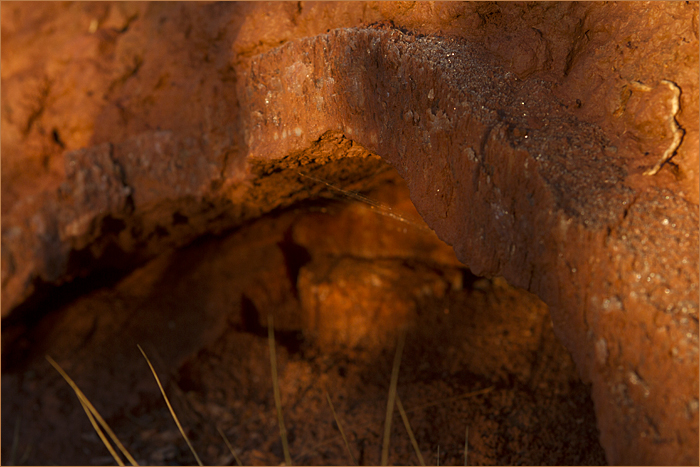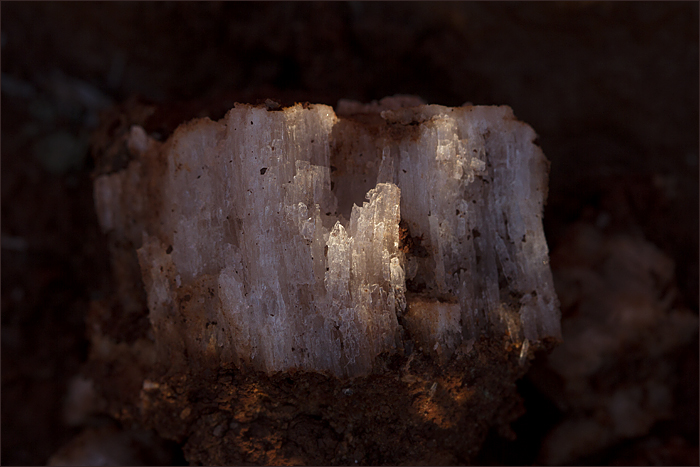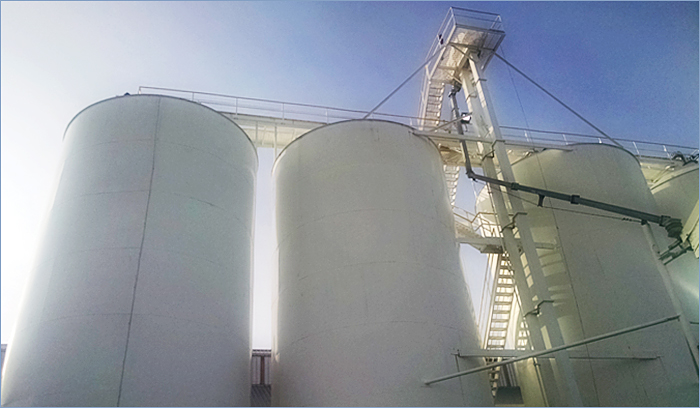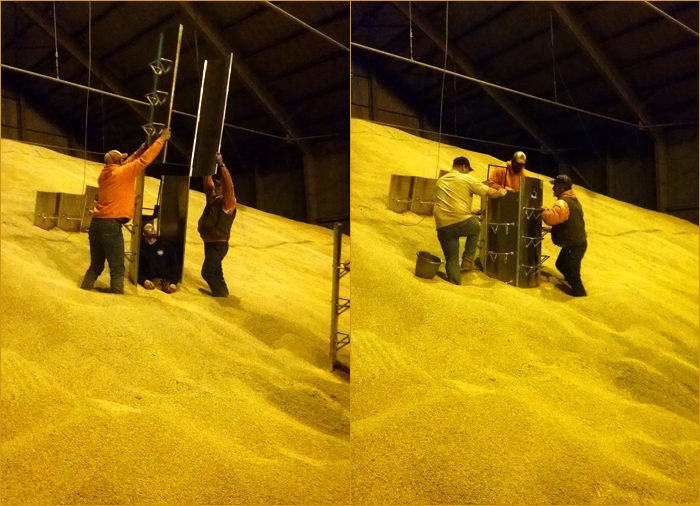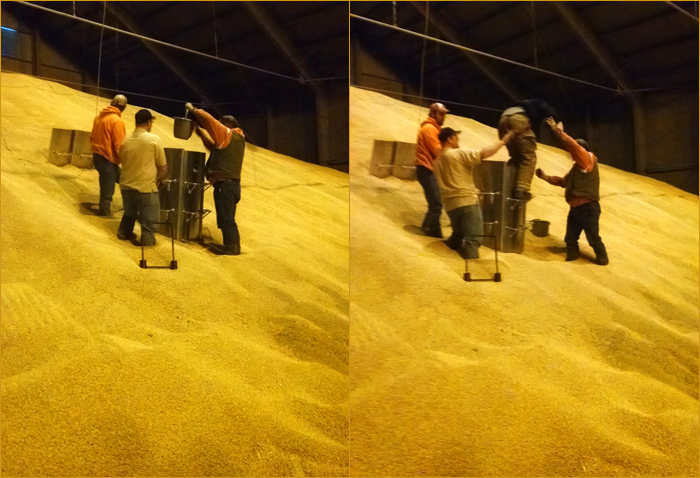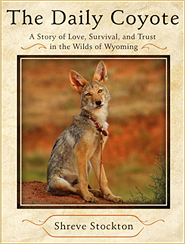Epiphanies, Email, & EMDR
Back in December, I was talking with a friend about being stalked. It came up naturally in the midst of our conversation, I can’t remember how or why. I was stalked throughout the summer and early fall of 2010, and have felt “over it” for years. At some point in 2011, I actually felt bad for the guy, because he was suffering from mental illness and the court system totally failed us both. (To this day, I hold enormous anger toward the courts, for two reasons: 1) he was found guilty, convicted of stalking, and was allowed to walk out the courthouse door the very next day; and 2) the psychologist who administered the required mental evaluation declared his condition “beyond the scope of my expertise,” yet no other eval was done by a more experienced person, no treatment plan was offered or even discussed, and the whole issue – which was the crux of the larger issue – was completely ignored by the judge, the county attorney, and his court-appointed attorney.) When I found I had empathy for the person who stalked me for months, who harassed me daily, who eventually showed up with a loaded gun, I declared myself Over It, Zeroed Out, Free.
Back to the conversation in December with my friend: I mentioned that prior to his arrest, the man who stalked me sent me dozens of emails every single day, sometimes 50 a day – and the moment those words left my mouth, I stopped short. I couldn’t finish my sentence. It was like I was thrown into that cliche movie montage when all past events join together in one flash when everything clicks.
Epiphany.
THIS is my email problem. This is the source, the genesis. This is proof that, in fact, I’ve never gotten over it.
If you’ve been reading my blog long enough, you know about my email problem. I’ve written about it a number of times, I’ve tried to brainstorm various ways to get a handle on it. I haven’t been able to keep up with email since Charlie went viral back in 2007, and while that unanswerable volume was a source of guilt, it never caused panic and anxiety. It was simply an issue of time. I still enjoyed reading email and answering what email I could.
While I was being stalked, email was the primary, daily, method of assault, and checking email became a source of panic. Dread. Physical tension. It’s never gone away. Now, like then, when I check email I feel my heart beat higher and faster. Sometimes I mentally shut down, and, for hours or sometimes days, can’t click on the emails that come in. All this time, I have thought my email anxiety, and the incompetence that anxiety caused, was my failure. All these years, I believed it was an area of life in which I sucked and couldn’t improve, no matter how hard I tried. Now I realize this is the f*cked up way that f*cked up experience damaged me. How it has affected me on a daily basis ever since, how it has affected my business and my ability to do my work. It’s been seven years, and I still can’t look at email without my autonomic nervous system activating a panic response. Until my random December epiphany, I never put it together, never identified the timeline when the task of email shifted from “too many to keep up” to “if I touch this I might die.” All this time, it was my psyche having a reaction in my body – a total and complete rejection of email – in order to protect myself.
This issue of protection is multilayered. There’s the obvious part of becoming conditioned to fear new messages, of not wanting to see what came in, of bracing myself for the awful and the disturbing every single time I sat down to check email. But it’s so much more than that.
In the series I wrote on stalking, the first installment of which I posted the day after his sentencing, I shared a lot of details. But I didn’t share everything, because I didn’t know if it was over. I didn’t mention that a friend who worked at Google put some code on my blog to track his IP address and activity, and that the man who stalked me had been visiting my blog over 100 times a day. That works out to every five minutes for ten hours a day, every day until he was arrested. I didn’t mention that I had knives stashed everywhere, indoors and outside, including a huge chef’s knife I kept in my shower (I had no escape route from my shower, what if he showed up when I was in the shower?). And the bigger part of this issue of protection is not wanting to bring this on myself ever again. This makes me cry as I type. Because the man who stalked me was a regular commenter on The Daily Coyote. I recognized his name, as I do with all regular commenters. He wrote me a totally normal email in the early summer of 2010, and I responded. And then all hell broke loose.
I wrote back. I wrote back. Might I have saved myself the misery if I hadn’t written back? If I hadn’t responded? For another woman, the thought that haunts might be I walked home alone or I didn’t want to be rude or I had that drink or I trusted him. Even though the violence we suffer is never our fault, where else do you put the focus – by which I mean, how else do you protect yourself from that day forward – when you can’t trust others not to harm you?
This epiphany left me reeling. It was illuminating, and also depressing, and it made me really sad for myself and really, really angry for all the women who endure violence or assault or harassment, because violence against women is still, so often, minimized by men – just “twenty minutes of action.” Yet, this is the aftermath. I have been affected every single day since 2010 and, as I wrote back then, I got the shrapnel version! I was mentally tortured for months, but I wasn’t physically assaulted, I wasn’t raped.
Along with the shock and the anger and the sadness that came with this epiphany, I also felt thrilled. Downright giddy. Because now that I had determined the true root of my email problem, I knew I could fix it with EMDR.
The first time I did EMDR was after my apartment building in San Francisco burned down, which also happened to be my greatest lifelong fear. I woke one night, at 3AM, to the sound of my neighbor’s screams. Flames were everywhere. I called 911 but wasn’t the first to do so. I ran out of the building barefoot, and to get out of the building I had to run past windows that were exploding from the flames. Two buildings were destroyed and two of my neighbors died that night. Afterward, the smell of smoke – even the scent of a distant barbecue – would send me into full-body panic-mode. Two sessions of EMDR cured that; I love the aroma of wood smoke in the winter air, and am typing through a haze of smudge smoke right now.
The second time I did EMDR was after being invited to give the commencement address at CSU. I wasn’t about to turn down such an honor, yet public speaking happened to be my second greatest lifelong fear. Three sessions of EMDR (plus daily meditation and tons of practice), and I rocked that speech.
I love EMDR because it works fast. It’s like being in a dream. It’s often described as entering the REM state while being awake. And it works in spite of yourself.
I’ve done two sessions of EMDR for this, and have one more scheduled, and things are different. I still can’t keep up with the volume of email I receive. I still prefer to compose longhand than on a keyboard. But the fear is gone. The anxiety is gone. I don’t want to hide anymore.
Click HERE to find EMDR practitioners near you. Many offer a sliding scale.
More on the Crystal Cave…
Thank you to everyone who left suggestions/theories/advice regarding the mystery mineral! I studied your wise words and the landscape and the internet. Many of you were correct: it is selenite, which is a form of gypsum. We do have a lot of gypsum around here, but it’s usually in the form of powdery rocks. I’ve traversed dozens of square miles surrounding the crystal cave and it’s the only spot I’ve seen the crystals.
The name selenite comes from the Greek word σελήυη for moon. Google led me to the Naica caves in Mexico, home to spectacular, enormous selenite crystals… the magical big mama of crystal caves!
Chloe showed no interest in the cave – she walked right past it. There is no evidence of animal use, past or present. It was definitely never used by humans – it is much too small! It is a fairy cave! {or, as JaneK posited, the Toothfairy’s branch office.}
. . . .
I am so behind in correspondence. I can’t decide if it’s better (or worse) to start at the oldest email – which came in over the summer while I was out of town or otherwise focused on Star Brand Beef – and move forward (which makes the authors of new email wait WEEEKS) or start at the newest email and work backwards (which makes the authors of older email wait MONTHS) and I get paralyzed. I suck. At email. I’m sorry. I have never failed so consistently and for so long (years upon years!) at anything like I have at this. It is something I am still trying to master.
As my aptitude lies in the visual, I have TWO calendars in the works for you and they are AWESOME. One is Charlie, and one is one that will make everyone happy. Charlie also makes everyone happy, so….. prepare for a lot of happiness. I hope to debut them in the next week or so.
. . . .
Weeding one’s mint patch is quite possibly the most wonderful-smelling chore.
. . . .
The Crystal Cave
I was on a hike with Chloe the other day, and happened upon this magical spot….
a small cave, created from an arched strata of crystals!
A closeup of the archway:
The crystals were dusted in dirt, but sparkled in the sun….
I have no idea what mineral this is.
If I decide I must know (as of now, “magic” is suffice for me), I will go back for a little piece.
Bits like this were scattered about on the ground:
Here is the cave in flat light:
The main cavern is about 18 inches deep, with tunneled hallways going deeper.
Two fairies agreed to pose for me ~ do you see them?
Caveman Motivations
The other day, my mind wandered into wondering about the motivations of early humans. Here’s the list I came up with, in order of priority:
To make their lives
• safer
• easier
• more secure
• more convenient
• more beautiful
• more meaningful (to find/define the meaning)
And then I wondered what has changed. And then I realized NOTHING HAS CHANGED. Nothing has changed, in regards to general human motivations, in 50,000+ years. The technology with which we attempt to achieve them has changed (vastly and drastically), but our incentives? Still the same as cavemen.
And then I decided to assume, for the sake of a mind game, that these motivations are no longer sound. Let’s say we’ve solved them, wholly and completely and permanently. I decided to try to see if I could:
TO MAKE OUR LIVES SAFER: Einstein said, “The most important decision we make is whether we believe we live in a friendly or hostile universe.” Platitudes can be found in many religions, spiritualities, and philosophies which all boil down to “you are always safe (if you believe).” I say “platitudes” because it is hard for me to reconcile the words “you are always safe” when juxtaposed against the facts of this speech and this book and this story and the truth that I could continue this list of examples for pages. So let’s circle back to this one.
TO MAKE OUR LIVES EASIER: “Easier” isn’t a sustainable thing. What if we collectively let go of wanting things to be easy all the time. I’m taking this back to the premise of my commencement address: you can’t avoid pain. It does not matter how much money one has or how much power one has or how much love or how much sex or how many awards – these things do not magically make people exempt from pain and difficulty. To attempt a life of permanent easiness that is free from pain is futile, and therefore a waste of time, energy, and opportunity. So let’s take EASIER off the list.
TO MAKE OUR LIVES MORE SECURE: “The illusion of safety” is a concept my aunt and I came up with right before my cross-country Vespa ride. I did not have room to bring a tent. And I didn’t want to bring mace because I didn’t know how the pressurized canister would handle the extreme heat and elevation changes of my ride (I didn’t want it to explode on me). And my aunt and I came to realize that “tent” and “mace” do not guarantee safety, or even do much to mitigate potential harm the way my helmet and leathers did. And even my helmet and leathers didn’t guarantee my safety. We want guarantees so badly and we just don’t get them. Perhaps a better term is “the illusion of control.” The ancient Greeks called it the “caprice of the Gods,” and built their entire mythology around it. I have an IRA and I wear my seat belt and I recommend both, but they don’t guarantee anything. So let’s take SECURITY off the list.
TO MAKE OUR LIVES MORE CONVENIENT: Convenience is killing us. I decided this when I was living in the cabin, which was glorified camping, especially through six Wyoming winters. I didn’t have a furnace and I had to chop wood for the woodstove and haul water from the horse trough but I was in excellent shape, just from living – I got strong because I didn’t have a button on the wall to make my hovel warm. And while I wouldn’t really wish that kind of lifestyle on anyone, nor on myself at age 50-plus, going from furnace-heated-house to car to elevator to office to sofa to bed with some take out meals in the middle is not great for our health. So let’s take CONVENIENT off the list.
TO MAKE OUR LIVES MORE BEAUTIFUL: I love art, I make art, and, in my opinion, music is utter magic. But we’ve got nuthin’ on Mother Nature – her work is the best. I don’t NEED jewelry when I have a sunrise. So let’s accept that there is BEAUTY all around us all the time and take that off the list, too.
TO ASSIGN MEANING TO OUR LIVES: I may have become a bit cynical after so much loss and death in the past few years, or maybe I’ve become more realistic, but I’ve come to think that so much of the meaning we try to assign to our lives (and to death) are bedtime stories for grownups. Stories we tell ourselves to feel better, to feel less out of control, perhaps to guide but mostly to comfort. Here’s the meaning I’ve assigned everything at this point: all we have is right now, and we really don’t know f*ck-all about any of it. So that takes MEANING off the list.
And then I wondered what’s left. If we can go back to the first point of safety and determine that we are not in imminent danger, and everything else on the list of caveman motivations has been refuted, what could motivate us? What WOULD motivate us?
And I decided the answer is KINDNESS. Kindness to others.
Vonnegut was right: “There’s only one rule that I know of, babies – God damn it, you’ve got to be kind.”
And if we were able to do this, REALLY were able to, collectively… the first point of safety would be granted to so many who don’t have it now.
It’s been interesting, fun, and disturbing to analyze myself since going on this mind trip – my thoughts, my choices, my actions – am I leading with a caveman motivation or am I leading with kindness? It is a work in progress.
Bizarre Fantasy, Realized
Back when I was in high school, a pal and I came up with a brilliant idea for an amusement park – a series of pools, but none filled with water. Instead, one would be filled with honey, another with ball bearings, another with super-saturated salt water, others with types of grain, etcetera. The point was to jump into the pools and… that’s it. Sensory amusement. Obviously impossible to implement due to sanitary reasons.
About a year ago, my ambulance director told us about a special training event, grain bin rescue, open to all Fire & EMS personnel in the region and taking place at the Coors plant. Grain storage warehouses and grain elevators are common around here, as barley (for beer) is one of the big crops in the area. I jumped at the opportunity to attend, even though it was just after my surgery and I still felt 90% non-functional. Not only was it an extremely unique training opportunity, it was one that would get me in the vicinity of a decades-old fantasy. I immediately volunteered to be a “victim” so I could half-bury myself in a mountain of grain.
Turns out pools of grain are extremely dangerous and can cause death and dismemberment.
Barley dust is nine times more flammable than coal dust. Our training was held in a gigantic warehouse (like, the size of a city block); a spark in that environment could cause an explosion that would rattle the building, which would kick up enough dust from the eaves and rafters to cause a second explosion that would level the warehouse. If someone is trapped knee-deep in barley, they have about 400 pounds of pressure on their feet. If they were to be pulled out with a harness from above, they would literally have their body pulled apart (dislocation occurs with about 150 pounds of pressure). In a grain silo, which is an enclosed space, oxygen can be replaced with carbon dioxide if some of the grain is molding. CO2 is heavier than oxygen and sinks to form a puddle in the lowest point. Depending on CO2 vs O2 levels, this situation can cause someone to fall unconscious or even die if they become trapped in the grain and can’t get to oxygen.
As a volunteer, I was asked to carefully climb up the mountain of grain and stand in a particular spot. There were trap doors all over the floor of the warehouse, and I was standing ankle deep in grain, about ten feet up the grain mountain, directly above one of these trap doors. A man with a walkie-talkie said “OK, open it up,” and I slowly began sinking down into the grain, drawn down as the trap door in the floor below me opened and the grain rushed through. The action created a sinkhole and I sunk. When I was buried to my waist, the walkie-talkie guy ordered the trap door to be closed, and there I was, stuck in a grain mountain. It was very, very cold in the grain. It was hard to even slightly wiggle my feet.
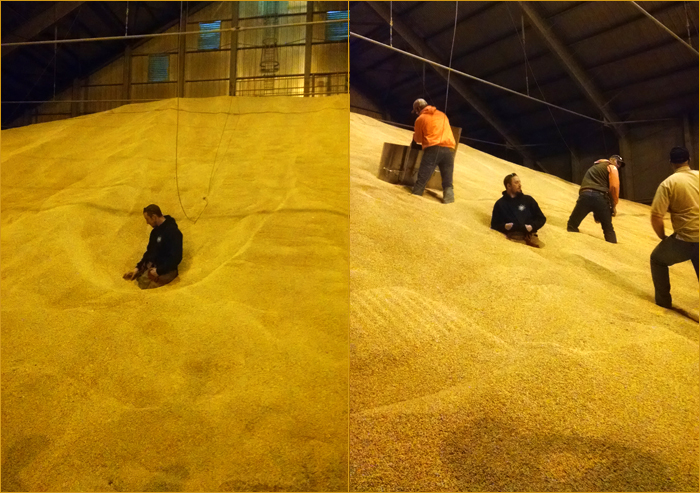
Another volunteer, realizing a fantasy he didn’t know he had.
The grain is like a quicksand avalanche – you can’t be pulled out, nor can you dig yourself out without displacing grain from above, which slides down to fill the area you’ve dug and bury you further. To rescue someone who is trapped requires creating a chamber that is immune to the pressure of the surrounding grain. First, panels are placed above to block the fall of grain while rescuers work – you don’t want to go from one person trapped to three or four people trapped.
Then panels, which are slightly curved and slide together at the edges, are placed around the trapped individual. Rescuers use the ladder rungs to jam them deep into the grain, being careful to avoid the buried limbs of the patient. Then, a rescuer climbs into the steel compartment and digs out the patient, bucketful by bucketful. The full buckets are passed to helpers outside to be dumped. One of the panels has ladder rungs on the inside, so that both parties can climb out.
The view from inside…..
« go back — keep looking »

